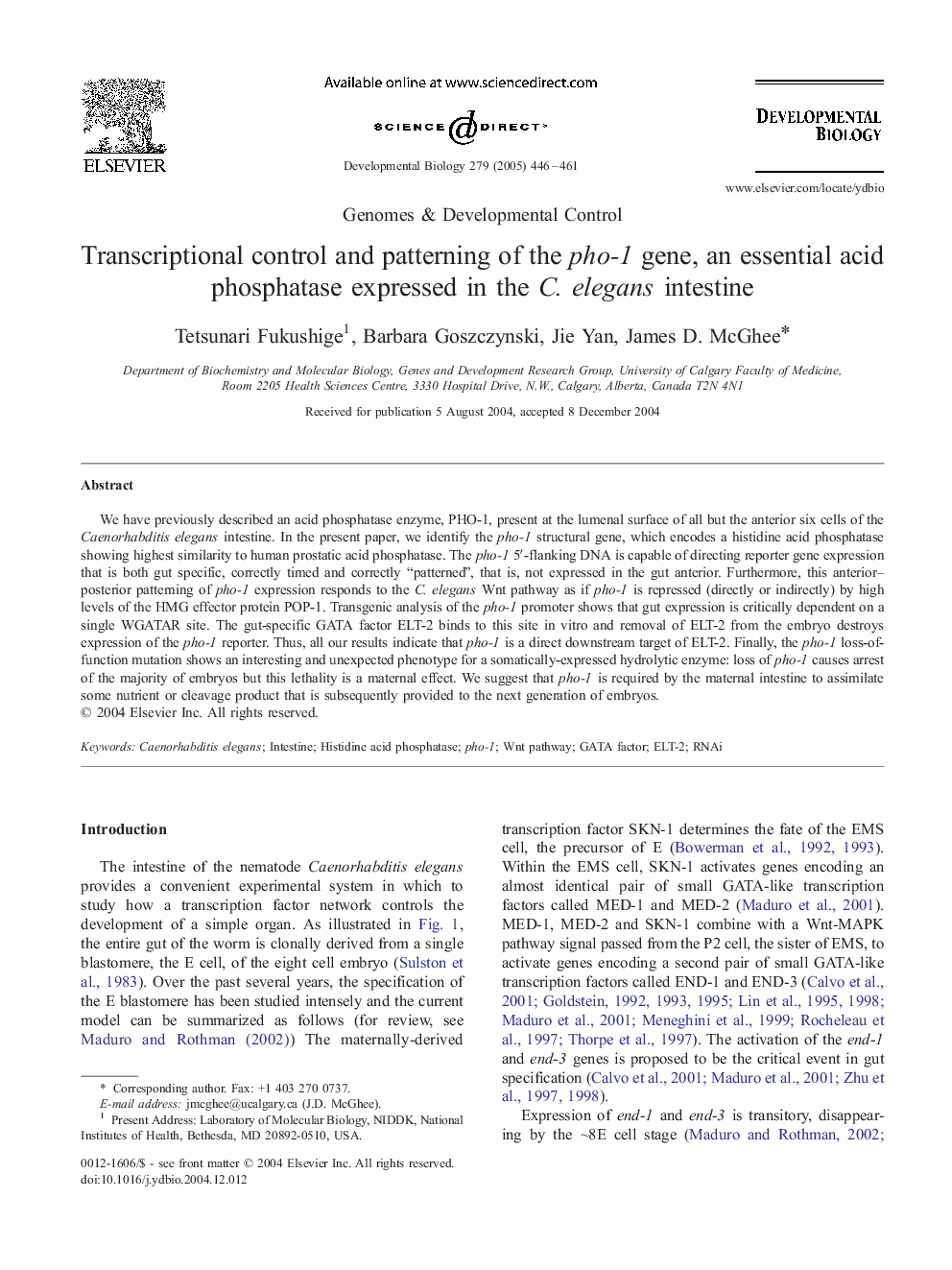| Article ID | Journal | Published Year | Pages | File Type |
|---|---|---|---|---|
| 10934261 | Developmental Biology | 2005 | 16 Pages |
Abstract
We have previously described an acid phosphatase enzyme, PHO-1, present at the lumenal surface of all but the anterior six cells of the Caenorhabditis elegans intestine. In the present paper, we identify the pho-1 structural gene, which encodes a histidine acid phosphatase showing highest similarity to human prostatic acid phosphatase. The pho-1 5â²-flanking DNA is capable of directing reporter gene expression that is both gut specific, correctly timed and correctly “patterned”, that is, not expressed in the gut anterior. Furthermore, this anterior-posterior patterning of pho-1 expression responds to the C. elegans Wnt pathway as if pho-1 is repressed (directly or indirectly) by high levels of the HMG effector protein POP-1. Transgenic analysis of the pho-1 promoter shows that gut expression is critically dependent on a single WGATAR site. The gut-specific GATA factor ELT-2 binds to this site in vitro and removal of ELT-2 from the embryo destroys expression of the pho-1 reporter. Thus, all our results indicate that pho-1 is a direct downstream target of ELT-2. Finally, the pho-1 loss-of-function mutation shows an interesting and unexpected phenotype for a somatically-expressed hydrolytic enzyme: loss of pho-1 causes arrest of the majority of embryos but this lethality is a maternal effect. We suggest that pho-1 is required by the maternal intestine to assimilate some nutrient or cleavage product that is subsequently provided to the next generation of embryos.
Related Topics
Life Sciences
Biochemistry, Genetics and Molecular Biology
Cell Biology
Authors
Tetsunari Fukushige, Barbara Goszczynski, Jie Yan, James D. McGhee,
